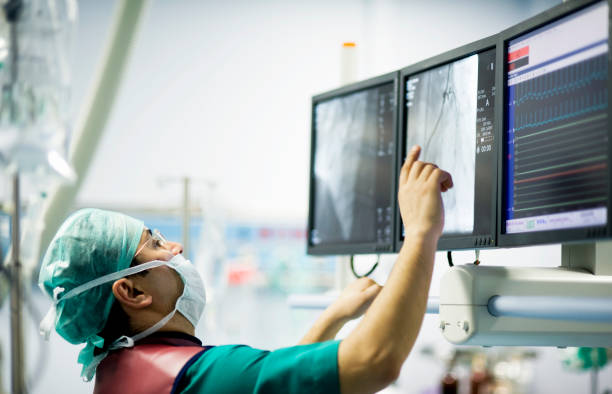Before your CT scan
If you have intravenous (IV) contrast, you will be given specific food and drink instructions before your exam. If you have IV contrast, please bring a list of your current medications, including dosage, to your exam. In addition, you may need to stop certain medicines before the test.
If you have oral contrast, you should drink your oral contrast liquid for 13 hours and one hour before your exam. Otherwise, do not have food or drink other than water for four hours before your exam.
Please arrive 15 minutes before testing and proceed to the main lobby desk. If your appointment is after 5 pm on weekdays, Saturdays, or Sundays, go to the emergency room. Bring your written medical order, insurance card, and photo ID. Wear comfortable clothing without zippers or metal buttons.
Tell your technologist if you have allergies, kidney problems, take diabetes medications, are or may be pregnant, or have eaten or drank anything before your test.
During your CT scan
If you have intravenous contrast, the contrast will be given to you through an IV line or injection. You then lie on a table that will slide into the CT scanner. You will be asked to hold your breath for a few seconds during the test. You should relax and stay as still as possible.
After your CT scan
You will be able to resume your regular diet and activities right away. The contrast liquid will naturally pass through your body. Contact your doctor for test results.
DIFFERENCES BETWEEN A CT scan AND AN MRI
CT and MRI
Almost all pathologies today require specific tests to confirm their diagnosis and indicate the most appropriate treatment in each case. Magnetic resonance imaging is one of these image-based diagnostic tests. However, other tests, such as the CT scan, also fulfil this function. Although these are not the same techniques, nor are they indicated in the same circumstances, many people indeed confuse a CT scan and an MRI.
WHAT IS THE DIFFERENCE BETWEEN A CAT SCAN AND AN MRI?
Popularly known by the name CAT, computerized axial tomography is an imaging test based on a scanner. This means that the TAC is performed by emitting rays released simultaneously on different areas of the patient’s body. Subsequently, the computer collects all these images at different angles to assemble them and generate a picture of the specific area to be studied.
IonizingIonizing radiation is the critical parameter that limits the use of Computed Tomography. For its part, magnetic resonance imaging or NMR is a powerful diagnostic tool whose use has increased significantly in hospitals worldwide. The main difference between them is that the latter does not use X-rays. Other differences are that CT is faster to perform but has a lower resolution than MRI, in which powerful magnets and radio waves are used to obtain images of the desired body part.
In addition, the fields to be studied in magnetic resonance are more limited; therefore, they are more specific than a scanner. For example, the CAT or scanner, as we have previously named, uses a source of X-radiation released simultaneously to generate the cuts of the body seen in multiple images. Such cross-sectional images generated during a CT scan can be reformatted in various planes, and even three-dimensional images can be generated.
On the other hand, Magnetic Resonance is a technique that consists of obtaining detailed images of internal organs and tissues through magnetic fields using large magnets, radiofrequency waves and a computer to produce images.
Because MRI can give such clear images of the soft tissues around the bones, it is the most appropriate test for spinal and joint problems. It is also widely used to diagnose sports injuries, especially the knee, shoulder, hip, elbow, and wrist. In addition, the images allow the doctor to see even the most miniature tears and injuries to the ligaments and muscles.
Also, an MRI of the heart, aorta, coronary arteries and blood vessels is a non-invasive tool for diagnosing diseases of the cardiac system.
In conclusion, therefore, a CT scan and an MRI are tests that facilitate the diagnosis of various pathologies but use different non-invasive techniques. Each is indicated in specific cases, and a medical professional must tell which one is appropriate at each moment.
RESCAN, A SPECIALIZED CENTER IN MAGNETIC RESONANCE IMAGING
CT and MRI are complementary tests that specialists indicate to corroborate diagnoses of various pathologies. These techniques can be performed in different centres, from medical clinics to polyclinics or hospitals.





Can you be more specific about the content of your article? After reading it, I still have some doubts. Hope you can help me. https://accounts.binance.com/en/register?ref=JHQQKNKN
I don’t think the title of your article matches the content lol. Just kidding, mainly because I had some doubts after reading the article.
Your article helped me a lot, is there any more related content? Thanks!